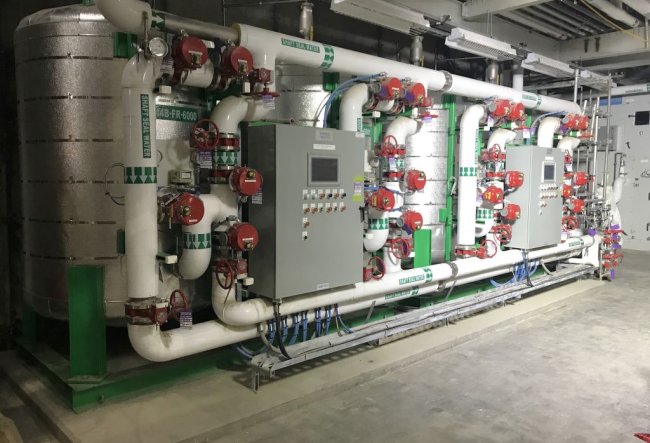Multi-media filters
Multi-media filters use a layered media bed of silica sand and anthracite. Anthracite provides in-depth filtration, while fine sand provides surface filtration. Multi-media filters are custom-made and come with a control panel to automate backwashing sequences.
We customize the design of our multi-media filters based on required flow rates and other inputs.
Flow rates
Our multi-media filters have different flow rate capabilities and can generally accommodate flow rates from 10 US gpm to 3,000 US gpm. We customize the design of your filters to meet your needs.
Types of multi-media filters
Fibreglass
Fibreglass filter tanks are lighter than those made of steel and they come in different sizes, with the widest measuring 1.6 m (63 in) in diameter.
This type of filter is generally suitable for small municipal, institutional, industrial, and commercial facilities.
Steel
Painted steel and stainless steel filters are custom-built and much sturdier than fibreglass filters. They also come in bigger sizes, with tanks up to 3.66 m (12 ft.) in diameter.
Since they are bigger and heavier, these filters generally meet the standards of larger municipalities and big industry players.
Why use a multi-media filter?
Multi-media filters are used to remove turbidity-causing suspended solids greater than 10 microns (nominal).
Our Promise
Magnor manufactures custom multi-media filters built to meet your specific needs whatever the type of application. In addition to providing you with support at the design stage and delivering factory-assembled turnkey equipment, we also offer preventive and emergency maintenance services to ensure your filters are operating at their best.
